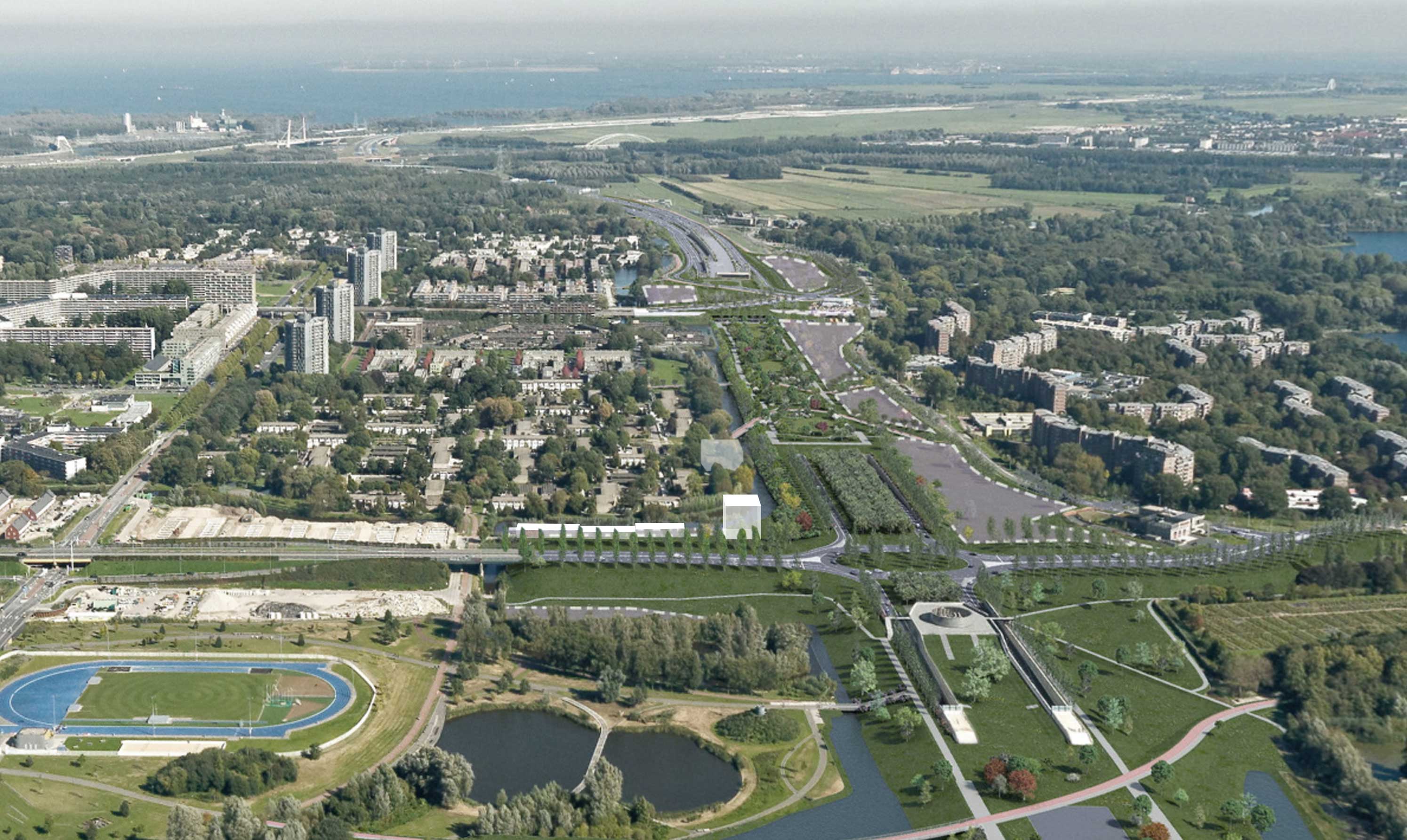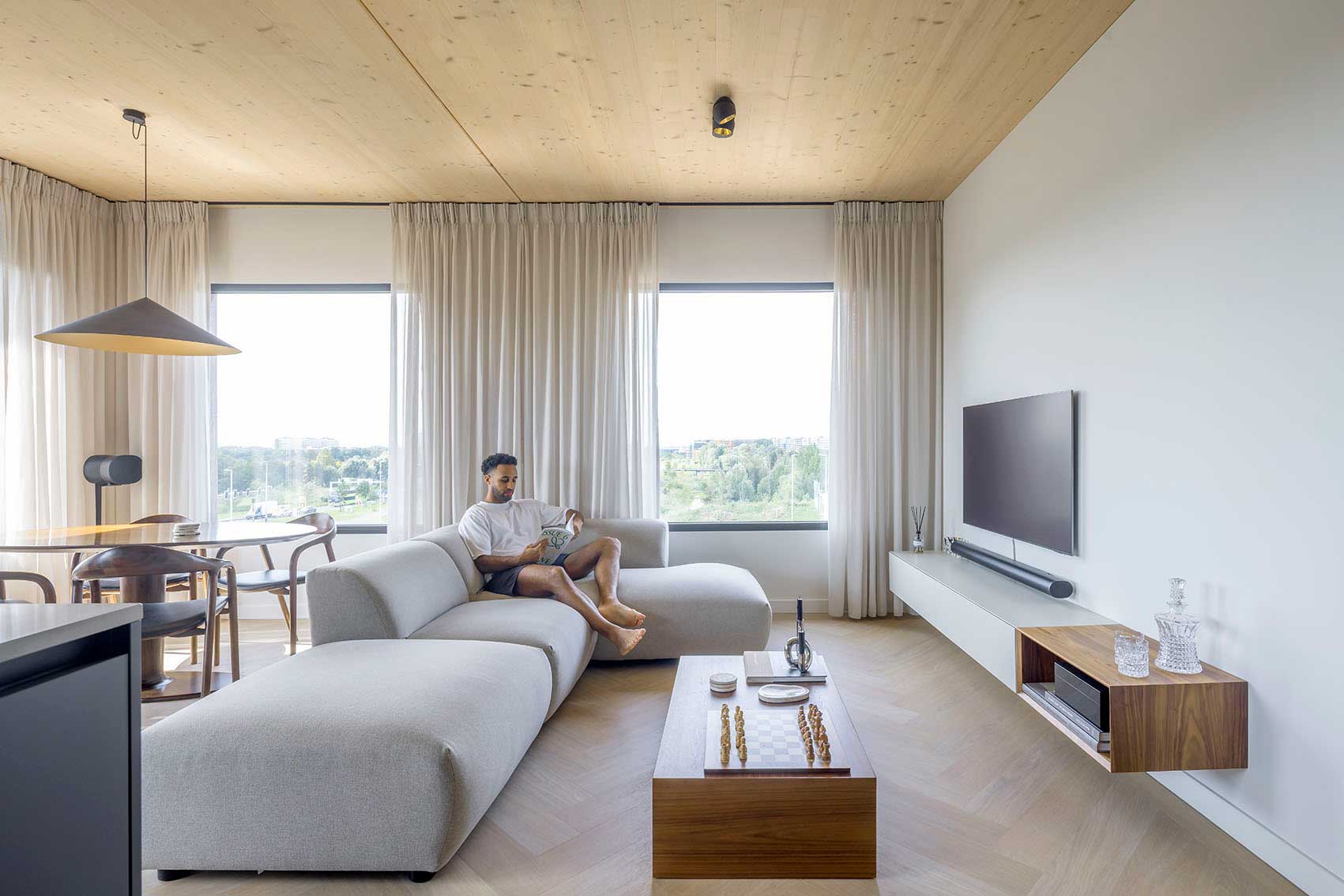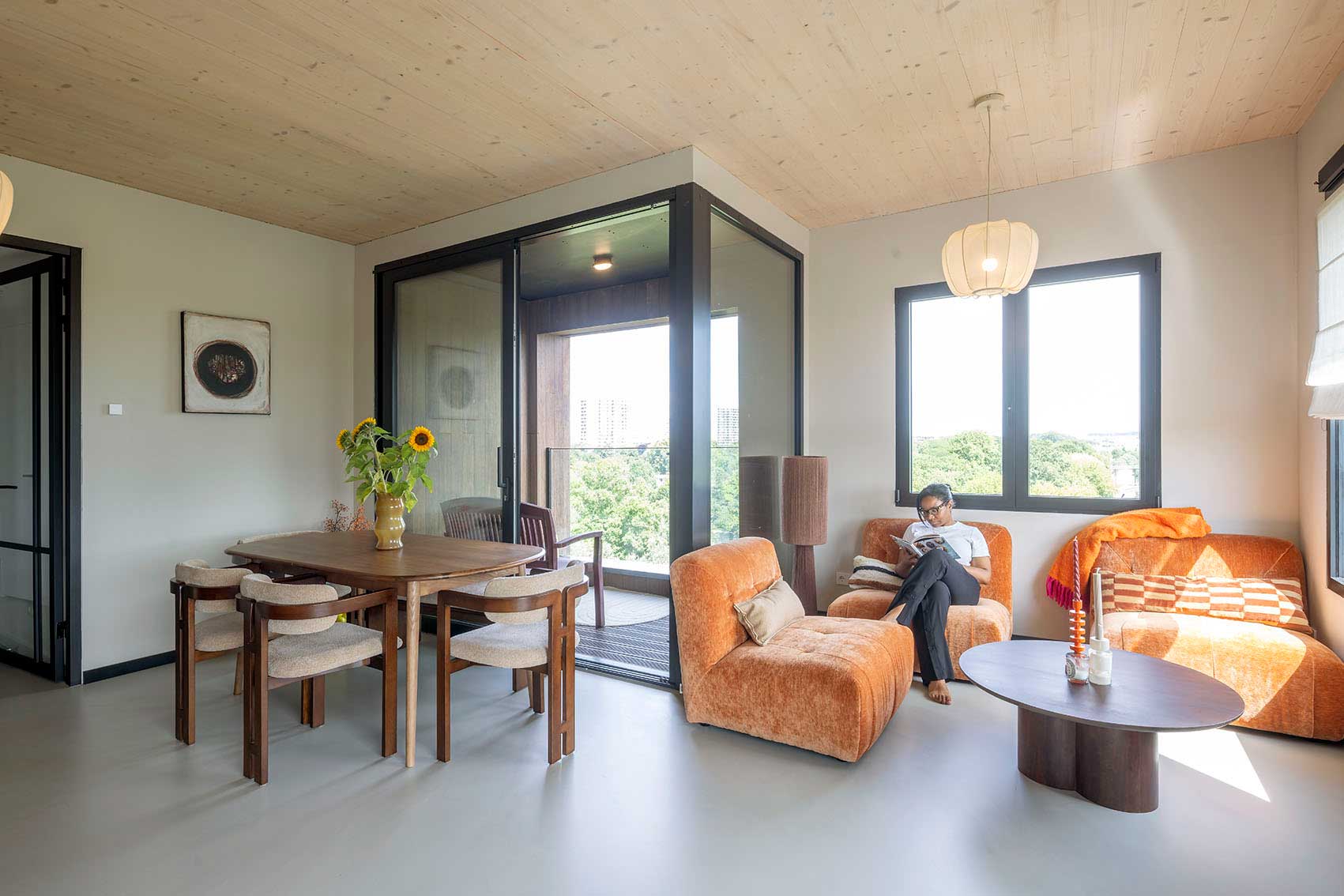Switi is an urban ensemble consisting of a strip of 24 row houses and a residential tower with 45 apartments in Amsterdam-Zuidoost, built entirely with biobased materials.
The ensemble extends the Kelbergen neighbourhood, a low-rise housing area designed by Jan Sterenberg in 1973 with social rental dwellings. Switi demonstrates how densification can contribute to the improvement of an existing urban fabric. The low-rise blocks follow the typology of the original row housing, with subtle shifts between the volumes. By placing the new homes on the opposite side of the existing canal, the water, which for decades marked the edge of the neighbourhood, has now become an integral part of it.
On a larger scale, the project is part of a major transformation linked to the construction of the Gaasperdammertunnel, which has removed the barrier once formed by the A9 motorway. The Brasapark, created on top of the new tunnel, now connects the Nelson Mandelapark and the Gaasperplas, and with them the Bijlmermeer and Gaasperdam districts. Within this setting, Switi forms an important green link that embodies the idea of ‘living in a park’. The tower has become a modest yet distinctive landmark that connects the two neighbourhoods on either side of the park, both physically and visually.
Integral sustainability has been a central theme, with architecture, urban design and public space offering a shared response to contemporary environmental ambitions. The architecture of Switi links sustainable design principles to the ideals of 1970s modernism: building in the spirit of the time, using modern materials and industrial techniques. Except for the foundation, Switi is entirely biobased. The structures of both the low-rise blocks and the tower, including stairwells and lift cores, are made of cross-laminated timber. The façades are insulated with wood fibre, while bamboo cladding and square loggias bring coherence to the ensemble. The project was prefabricated in 2D elements and assembled on site in just four months, including façades, window frames, solar shading, internal walls and fireproof components.
The low-rise buildings comprise 24 homes of 125 m² over three storeys, designed for flexible layouts and a strong relationship with the surrounding landscape. The tower contains 45 apartments of 60 m². All dwellings were sold within the category of ‘affordable housing’, with priority given to local residents to strengthen the social integration of the new plan and encourage housing mobility within the Bijlmer area as a whole.
y combining architecture, social-urban development and a green approach to public space, the project delivers a new residential quarter for Amsterdam that is in line with ‘Rainproof Amsterdam’ and ‘Nature-inclusive Building and Design’.
Switi won the Dutch National Timber Construction Award 2024 in the category ‘serial timber construction’, the prize the most innovative and inspiring timber construction projects in the Netherlands and recognizes projects that combine sustainability, aesthetics and innovation in a special way.
CO2-Facts:
Volume of wooden elements: 1.145m3
Stored CO2 in wooden elements: 870.000 Kg CO2
Avoided CO2-emissions: 1.044.000 Kg CO2
Speed of re-growth in German forests: 35 minutes
“De jury gaat voor het huzarenstukje (…)”
‘HOH Architecten geeft voorbeeld van verbetering door verdichting’ read article on Architectenweb
‘Kelbergen in Amsterdam ZO krijgt upgrade van HOH Architecten’ read article on De Architect
‘Laat de bouwsector niet de norm bepalen’, read article in De Groene Amsterdammer
Location: Kelbergen, Amsterdam South East, The Netherlands
Program: 24 ground-level homes, 45 apartments
Area: 12.100 m2
Client: BPD / Bouwfonds Gebiedsontwikkeling
Contractor: Ekowood Houses
Consultants: Nieman Raadgevende ingenieurs (fire, building physics), Constructie Adviesbureau Geuijen (construction)
Public space: Municipality of Amsterdam and HOH Architecten
Status: Completed September 2024, construction of public space spring 2025
Project team: Freyke Hartemink, Jarrik Ouburg, Carsten Hilgendorf, Frederique van Erven, Csenge Király, Athina Pappa
Renderings: Case Study Homes
Photography: Marcel van der Burg, Max Hart Nibbrig, Ekowood Houses, HOH Architecten








































